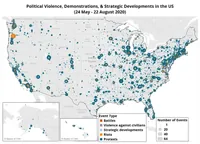Morocco's High Atlas: Slow Recovery One Year After Devastating Quake
A year post-earthquake, Morocco's High Atlas villages struggle with reconstruction delays and inadequate living conditions. Government promises $12 billion for rebuilding, but residents face bureaucratic hurdles and uneven aid distribution.

One year after a devastating earthquake struck Morocco's High Atlas region, many villages still bear the scars of destruction. The temblor, which claimed nearly 3,000 lives, has left a lasting impact on the impoverished agricultural communities in the area.
In villages like Imi N'tala, where dozens perished due to a mountainside collapse, the aftermath remains visible. Debris has been neatly piled alongside temporary shelters housing displaced residents. Some await funds for reconstruction, while others are caught in bureaucratic limbo, awaiting approval for their rebuilding plans.
The region, known for its rugged terrain and limited accessibility, faces unique challenges in recovery. Mohamed Soumer, a 69-year-old retiree who lost his son in the disaster, expresses frustration over local authorities' prohibition on rebuilding in certain areas due to safety concerns. He states:
"Residents want to stay here because they have land where they grow vegetables to make a living. If they go somewhere else and abandon this place, they will not be able to live there."
This sentiment reflects the deep connection many residents have to their ancestral lands and traditional livelihoods.

The Moroccan government has pledged monthly stipends and additional funds for seismically safe reconstruction. However, the distribution of aid has been uneven, with many still awaiting assistance. The slow pace of reconstruction and perceived neglect of rural infrastructure have fueled protests in towns like Amizmiz and Talat N'Yaqoub.
Officials estimate the rebuilding process will cost 120 billion dirhams ($12 billion) and take approximately five years, extending to 2028. While some progress has been made in rebuilding roads, health centers, and schools, the government recently acknowledged the need to accelerate home reconstruction efforts.
The 2023 Morocco earthquake was the deadliest in the country since 1960, highlighting the region's vulnerability to seismic activity. The High Atlas, the highest mountain range in North Africa, plays a crucial role in Morocco's water supply and climate regulation. However, the area's traditional Berber architecture, often using adobe and stone, can be susceptible to earthquake damage.
As Morocco works to improve its disaster preparedness, the challenges faced in the High Atlas underscore the need for sustainable, seismically resistant construction techniques and more equitable rural development. The country's national strategy for rural development, implemented since 2020, faces a critical test in addressing the long-standing disparities between urban and rural areas.
The ongoing recovery efforts in the High Atlas serve as a reminder of the complex interplay between natural disasters, economic development, and cultural preservation in vulnerable regions.


































